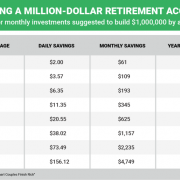Key Takeaways
- Focus on eliminating high-interest debt to free up resources for savings and investments, setting a solid foundation for retirement.
- Trim excess expenses to increase funds available for investing in your retirement fund, laying the groundwork for financial security.
- Maximize “catch-up” contributions to tax-advantaged accounts, enhancing your nest egg with the help of professional financial advice.
Navigating your 50s can be a critical period for financial planning, standing at the crossroads between active employment and impending retirement. This decade is an opportune time to assess, adjust, and accelerate wealth-building strategies to ensure a secure and comfortable future. In this guide, we will explore essential tactics for enhancing financial health in your 50s—from maximizing retirement savings with strategic contributions to diversifying income streams beyond traditional means.
Reduce Debt
In your 50s, paying down debt is crucial for building wealth and securing a financially stable future. This period marks a strategic shift from accumulating to eliminating debts, recognizing that each dollar paid off not only increases net worth but also frees up more resources for investments and savings. Reducing debt not only bolsters financial health but also alleviates the stress tied to high liabilities, paving the way for a smoother transition into retirement.
A strategic approach to managing debt starts by targeting high-interest obligations first—such as credit card balances or personal loans—which can lead to substantial interest savings over time. Additionally, consolidating debts into a lower-interest option can simplify repayment and help reduce overall costs more effectively.
A targeted debt strategy focuses on eliminating high-interest debts first—like credit cards and personal loans—to minimize long-term interest payments. Consolidating multiple debts into a lower-interest loan can also simplify your finances and lower your overall repayment burden.
Expenses Review
At this stage, fine-tuning your budget becomes crucial, as identifying and trimming unnecessary spending can free up significant funds for saving and investing. It’s time to critically evaluate your lifestyle habits—consider downsizing services you no longer need, shopping smarter by seeking discounts, or even switching to more cost-effective brands or providers.
Embracing frugality isn’t about sacrificing joy but rather choosing financial health over temporary pleasures. Many people use budgeting tools to gain insight into monthly expenditures, making it easier to spot areas ripe for reduction. For example, consolidating trips to save on gas, opting for home-cooked meals over eating out frequently, and canceling underused memberships can all contribute toward enhancing your financial situation. Investing the money saved from these strategies not only bolsters your retirement fund but also brings you closer to achieving lasting financial security. In essence, conscientious spending in your 50s lays down a solid foundation for wealth that supports both current needs and future aspirations.
Maximize Retirement Contributions
Maximizing retirement contributions in your 50s is crucial for building wealth as you edge closer to retirement. As you get closer to retirement, you enter into a period that allows for “catch-up” contributions in tax-advantaged accounts, offering a chance to increase your savings and benefit from compounding interest significantly. By prioritizing these additional deposits, you can enhance the growth of your retirement fund substantially.
Adjusting your budget to boost these contributions is essential. Whether it’s through an employer-sponsored 401(k) or an individual IRA, increasing your savings now can make a profound difference in the size of your nest egg. Consulting with a financial advisor could also optimize this strategy, ensuring that you’re making the most out of every opportunity to secure a financially comfortable future.
Carefully Manage Risk
Managing risk becomes increasingly important as you navigate through your 50s. This phase requires a strategic reassessment of your investment portfolio to ensure it aligns with your current risk tolerance and retirement goals. As retirement nears, the focus should shift toward preserving capital while still achieving reasonable growth. Diversifying investments across different asset classes—such as stocks, bonds, real estate, and possibly precious metals—can mitigate risk and reduce volatility in your portfolio.
In addition to diversification, consider adjusting the allocation of assets in your investment mix. While equities offer higher growth potential over time, they come with increased volatility. Gradually increasing the proportion of fixed-income securities can provide more stability as you approach retirement age. Regularly reviewing and rebalancing your portfolio ensures that it remains consistent with your evolving risk appetite and financial objectives, which is a critical step toward safeguarding wealth during this pivotal decade.
Establish a Retirement Plan
Creating a comprehensive retirement plan in your 50s is an essential step toward securing financial stability and building wealth as you approach the golden years. This process begins with a clear assessment of your current financial situation, including savings, investments, debts, and expected income streams in retirement. Understanding these elements allows you to set realistic goals for retirement living expenses based on your desired lifestyle. It’s also crucial at this stage to account for unforeseen costs such as healthcare, which can significantly impact spending needs.
To effectively make a retirement plan:
- Evaluate Your Financial Status: Start by listing all sources of income (pensions, savings accounts, investment portfolios) and anticipated expenses.
- Set Clear Retirement Goals: Define your retirement age and the lifestyle you wish to maintain—traveling, hobbies, and relocation plans should be considered here.
- Calculate Expected Retirement Income Needs: Estimate how much money will be needed annually during retirement, considering inflation rates over time.
- Develop A Savings Strategy: Determine how much must be saved from now until retirement to meet future income needs. This may involve maximizing contributions to tax-advantaged accounts like IRAs or 401(k)s.
A critical part of creating this plan involves regularly reviewing it—preferably annually—to adjust for any changes in personal circumstances or financial markets that could affect long-term objectives. Engaging with a professional financial advisor can provide valuable insights into complex areas such as tax planning and investment management tailored specifically towards achieving your individualized goals efficiently while navigating through the complexities of preparing for a comfortable retirement life.
Horizons Wealth Management can help you navigate your financial questions, no matter your age. Get in touch today to learn more about our wealth management, financial planning, retirement planning and managed portfolio services.









